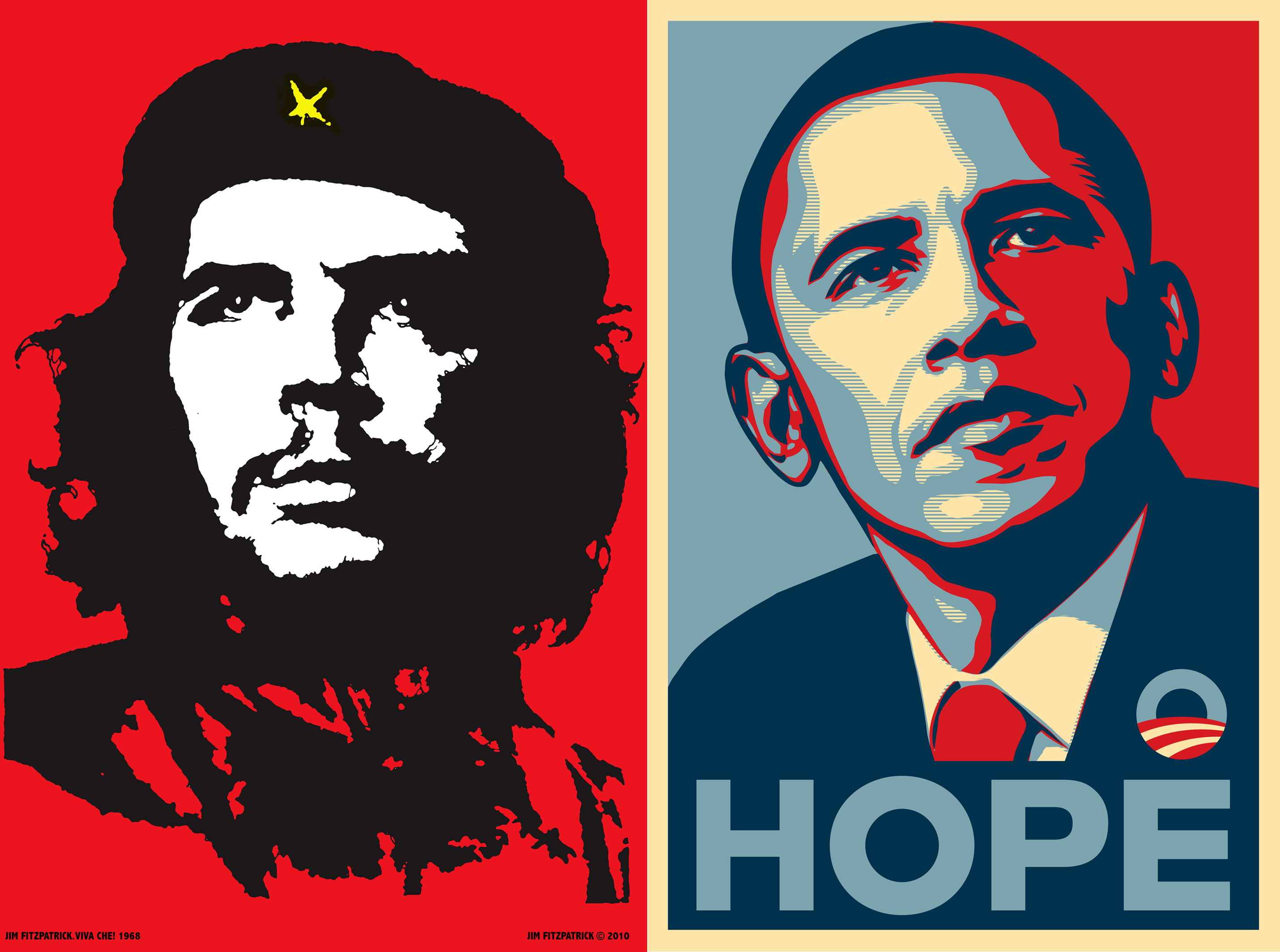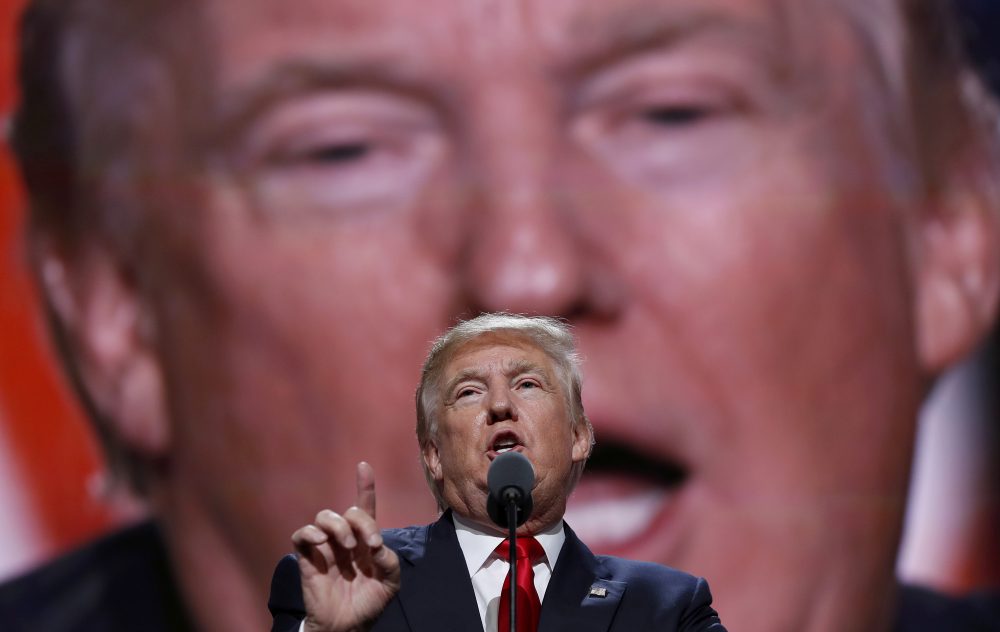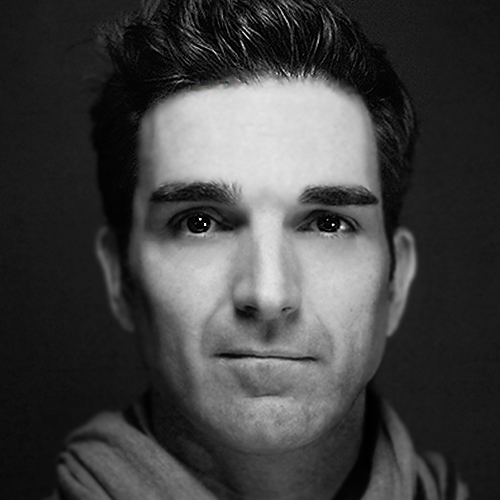In 2008, Shepard Fairey designed what has become one of the most iconic pieces of political art of all time. His famous (some may say infamous) portrait of a visionary Barack Obama gazing future-ward over the audacious legend, “HOPE” became emblematic of the populist campaign that ultimately delivered the aspiring senator to the White House.
From the outset, Obama’s message was one of inclusion. His campaign slogan, “Yes we can” was a rallying cry for social justice and grassroots revolution—a deliberate resurrection of the slogan used by the United Farm Workers, Sí se puede. In speeches and in ads, “we” was the predominant pronoun. It was change we could believe in.
But it was Fairey’s poster that prophetically attached a singular promise, hope, to a solitary figure, Obama.

The poster’s overtly propagandistic style leveraged a time-tested tradition. It used a strong image and a simple message to embody the collective hopes of a people in the charismatic image of a person.
Obama’s gaze and isolation are strongly reminiscent of Jim Fitzpatrick’s iconic image of Che Guevara (based, it must be noted with some irony, on a photo by Alberto Korda which Fitzpatrick found in Provo Magazine). Even the poster’s flat graphic treatment owes a stylistic debt to its archetypal antecedent (and before Guevara, the heroic images of Lenin and benevolent pictures of Mao that accompanied the Russian and Chinese Cultural revolutions, respectively).
Like the best propaganda, Fairey’s HOPE posters are powerfully seductive. As I write this, I’m sitting below an original screen print of that very image. Imagine hanging a two- by three-foot portrait of any other president in your home. When it was designed, the cultural implications seemed innocuous or, at worst, ironic. It almost read as an in-joke that the left-wing party of a country that bills itself as the world’s greatest democracy would embrace a campaign that borrowed so heavily from the graphic tradition of totalitarianism. We accepted it—perhaps uncritically—as merely the veneer of visual propaganda over an otherwise sincere campaign.
Indeed, Obama’s persistent use of inclusive pronouns served to undercut the cult of personality being scaffolded around him, the buttresses of which were manifest in a cavalcade of merchandise emblazoned with his likeness and logo. He was warm, self-effacing, and charming. When his campaign design team presumptively refashioned the presidential seal in Obama’s image (this before he was officially even the nominee) we chalked it up to a naive gaffe. When Republicans tried to sink the Affordable Care Act by nicknaming it Obamacare, the president’s professed indifference to the name made the eponymous term seem benign rather than authoritarian or paternalistic.
Eight years pass, and hindsight provides an alternate perspective. Donald Trump ran a visually chaotic campaign but upped the stakes by employing the rhetorical tools of propaganda. He announced his candidacy in a building named after himself. He accepted his party’s nomination in front of an Orwellian-scale projection of his own face. His unconventional convention declaration, “I alone can fix it,” finally and enthusiastically embraced with both arms the full promise of the cult of personality. It was the performance equivalent of Fairey’s HOPE poster—an audaciously simple message attached to a heroically singular figure. Life imitating art.
Today, that poster seems startlingly prescient.
If you believe—as I do—in the power of design to target audiences and shape narratives, then it’s worth considering the unintended consequences of the HOPE campaign. Yes, it helped elevate a comparatively unknown senator to America’s highest office. But as a cultural phenomenon it also laid the groundwork for the rise of Trump. Its overarching narrative demonstrated—perhaps for the first time in modern U.S. politics—that disenfranchised Americans have the same longing for a political savior as the disenfranchised everywhere. It gave form to that desire in the iconic image of a man, and invested in him the panacea for our disaffection: hope. Substitute Obama with the leader of any other country and we’d have no hesitation calling it propaganda.

Republican Presidential Candidate Donald Trump, speaks during the final day of the Republican National Convention in Cleveland, Thursday, July 21, 2016. (AP Photo/Carolyn Kaster)
Just as Fairey was among those responsible for the mainstream acceptance of street art as art, he inadvertently made overt propaganda an acceptable tool of mainstream American politics. The aesthetic of propaganda art is undeniably compelling and effective; the implications of that art are chilling. By introducing the aesthetic of propaganda art to the political mainstream, the HOPE poster also insinuated the genre’s ideals. Where Obama leveraged the aesthetic of propaganda for its cultural appeal, Trump has embraced—with relative impunity—its principles in both policy and persona.
As for the influence of the artist himself, Fairey’s three most often-cited influences—Martin Heidegger’s theories of phenomenology, George Orwell’s 1984, and Soviet-era propaganda art—are eerily manifest in the president-elect. He fabricates “fact” through repetition, aggrandizes himself and affirms his credibility with unrelenting conviction, and has an indefinite relationship with Russian influences.
Perhaps these characteristics are just an ironic coincidence, or perhaps they are ultimate reciprocation between life and the art it imitates.
Epilogue
By virtue of the ubiquity and effectiveness of the HOPE poster, Shepard Fairey now enjoys a unique position among the pantheon of living American artists. Critics and commentators eagerly anticipated his next political poster during the hotly contested 2016 election. This cycle, Fairey endorsed Senator Bernie Sanders (which made international news), designed a single event poster for the Sanders campaign, elected not to illustrate Secretary Clinton, and collaborated with the band Franz Ferdinand to create artwork for the their anti-Trump track, Demagogue.
As the inauguration draws near, Fairey’s political art has turned its lens away from the individual to focus on diversity and inclusion. For that effort he’s collaborating with the Amplifier Foundation to create a series of portraits emblematic of America’s vulnerable populations. The posters will be released on Inauguration Day.

